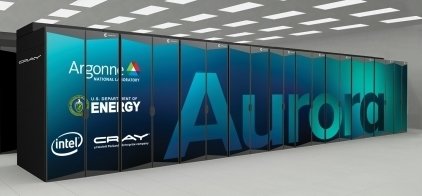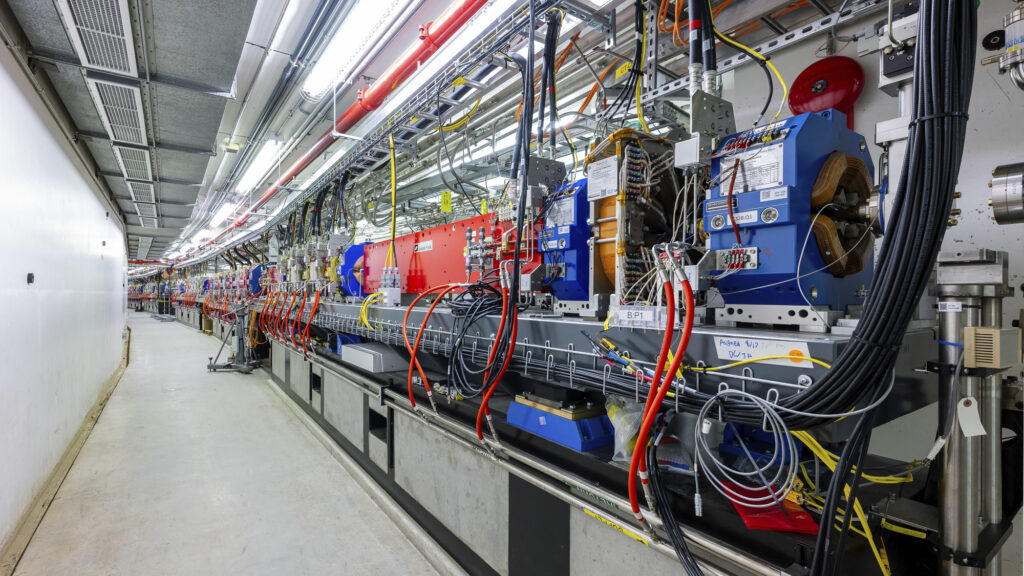
Upgraded APS at Agonne National Laboratory
The Advanced Photon Source (APS) Argonne National Laboratory has emerged from a year-long shutdown ready for its second act. An upgrade to the facility is underway whose centerpiece is the replacement of the original electron storage ring — installed in the early 1990s — powered by an assemblage of magnets, vacuum chambers and wires that will generate X-ray beams up to 500 times brighter than the original APS.
“The upgraded Advanced Photon Source will transform scientific research at Argonne,” said Argonne Director Paul Kearns. “Together with Argonne’s new exascale supercomputer, Aurora, the Advanced Photon Source will empower scientists to make discoveries at unprecedented speeds. No other research institution hosts a comparable dynamic duo of technology, each boosting the power of the other.”
Argonne said this puts the APS at the top of the list of the world’s synchrotron X-ray light sources. The upgraded facility has been operating for months, and scientific beamlines — the experiment stations where data is taken and discoveries made — have been gradually coming back online. When at its full brightness, the upgraded APS will be “untouchable” in the realm of X-ray science, enabling new insights and laying the groundwork for innovations in every field imaginable, according to Argonne.

“The upgraded Advanced Photon Source represents a significant investment by the Department of Energy in the future of American science and innovation,” said Harriet Kung, DOE’s Acting Director for the Office of Science. “DOE’s mission is to enable research that will help us tackle the energy challenges of the future, and the advancements that will come from the renewed APS will chart that path forward.”
Today’s ceremony dedicating the upgraded APS featured remarks from DOE Undersecretary for Science and Innovation Geri Richmond, along with a bevy of elected officials, CEOs and laboratory leaders. Richmond praised the APS’s contributions to American leadership in science and technology.
“The Advanced Photon Source has been a preeminent destination for the world’s scientists for decades, and with its expanded capabilities, it will continue to set the bar for X-ray research for decades to come,” Richmond said.

Agonne Director Paul Kearns
In a typical year, more than 5,500 scientists from across the country and around the world use the APS to probe the secrets of materials and natural phenomena. APS research tells us more about the materials that make up the world we live in and lays the groundwork for more durable microelectronic devices, longer-lasting and faster-charging batteries and more portable and efficient solar panels to combat the energy challenges of the future.
The upgrade to the APS has been more than a decade in the planning and includes not just the new storage ring but several new experiment stations — called beamlines — to take advantage of the enhanced X-ray beams. The updated facility is powered by a world’s-first injection technique called swap-out (see infographic), and the new and enhanced beamlines offer scientists new techniques to examine their samples in unprecedented detail.
With beamlines quickly returning to operation, the upgraded APS is very nearly ready to resume its experimental program, welcoming scientists back to conduct world-changing research. The storage ring continues to ramp up to full power, and these early experiments will be just the start. It’s clear the future of the APS is bright indeed.

APS storage ring tunnel
“Ten years ago, we could only imagine the extraordinary capabilities the upgraded APS would offer,” said Laurent Chapon, associate laboratory director for photon sciences and director of the APS. “Now it’s here, thanks to the dedication and hard work of an amazing team at Argonne, and we’re looking forward to decades of discoveries by our user community. We can’t wait to get started.”
“I’m immensely proud of the tm and their work over the past decade to realize the dream of the upgraded Advanced Photon Source,” said Jim Kerby, APS Upgrade project director. The skill, ingenuity, drive and guts to make this happen are incredible. The APS has been, and now with the Upgrade will continue to be a world-leading scientific facility for decades to come. I can’t wait to see the advancements that come from this research. They will change our daily lives for the better.”
source: Argonne National Laboratory



